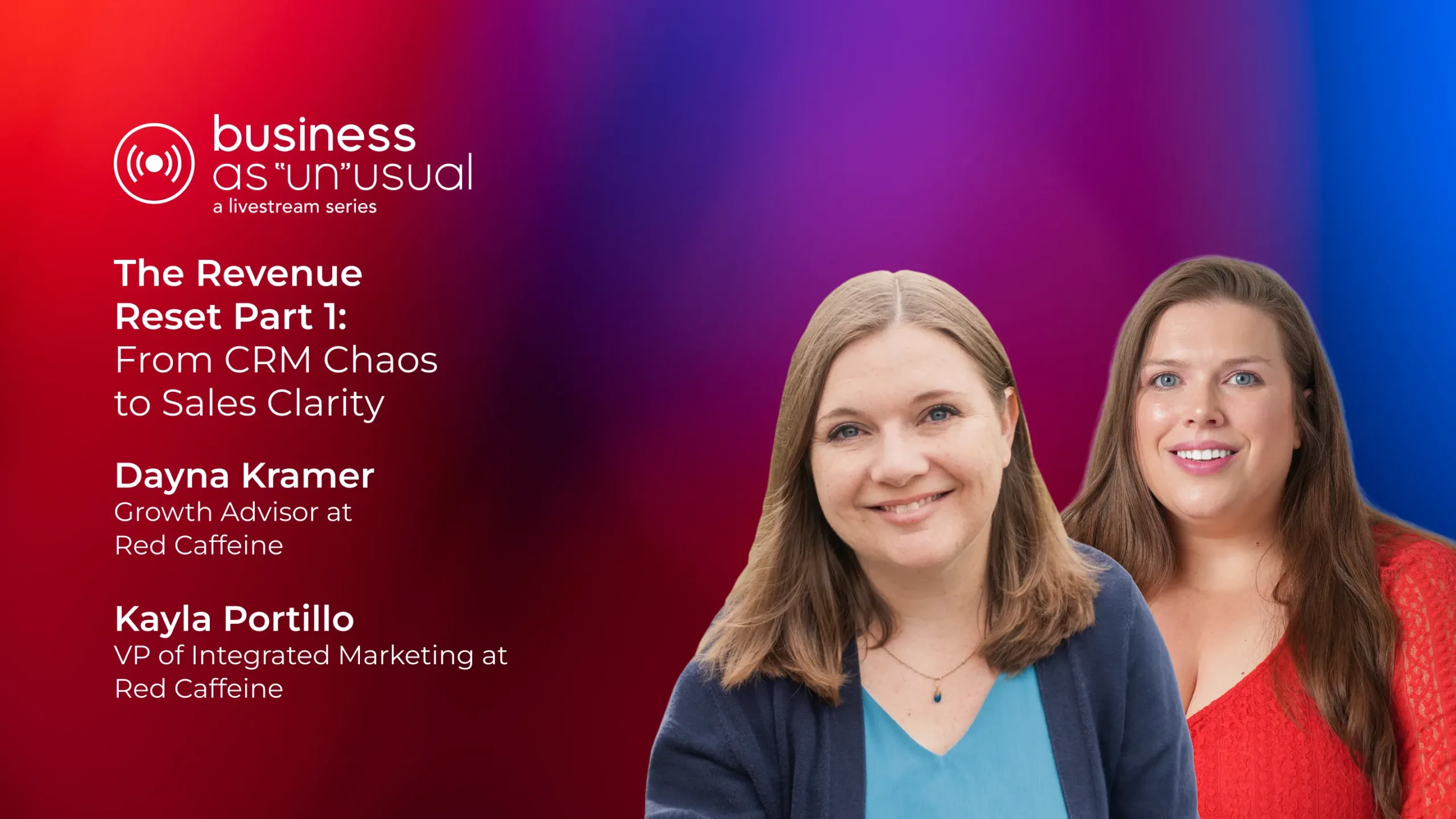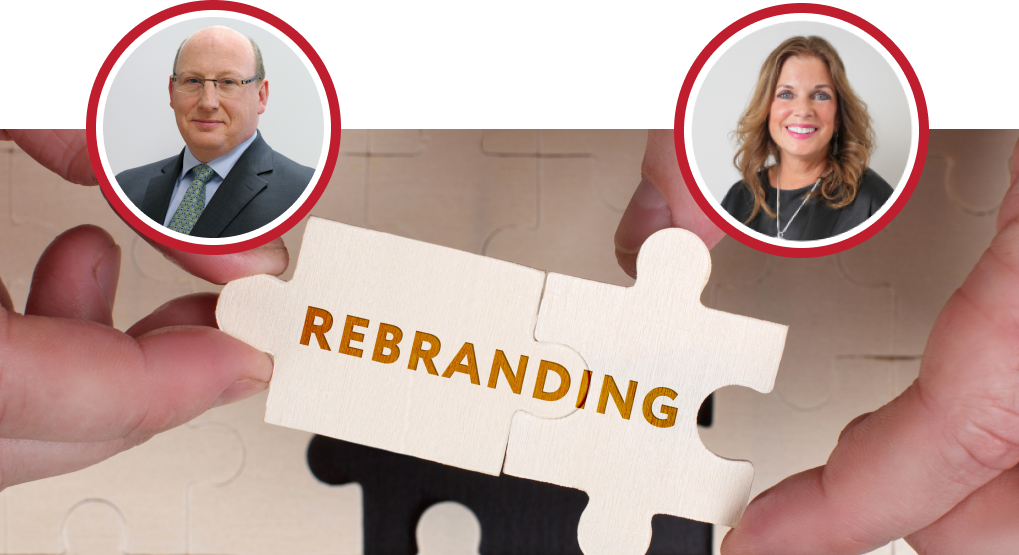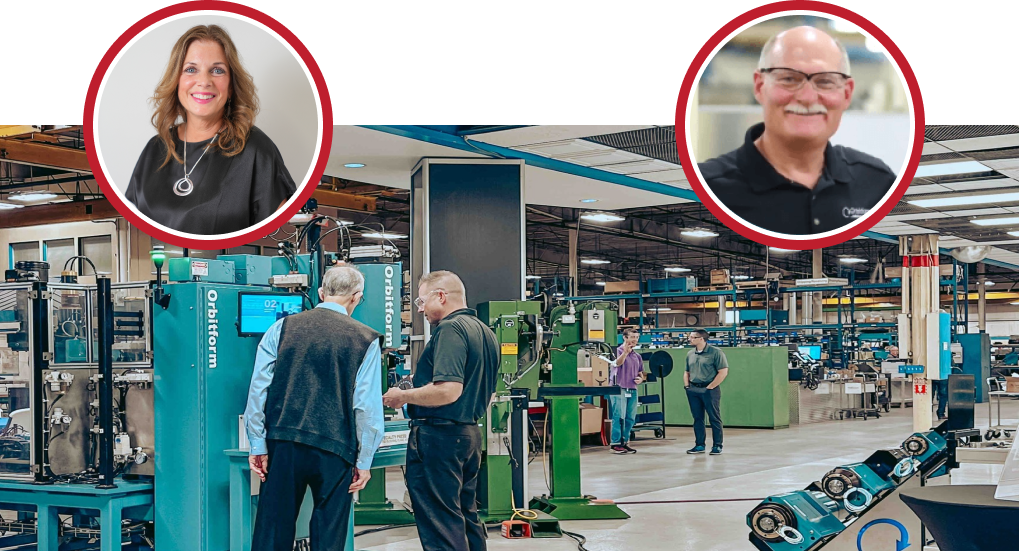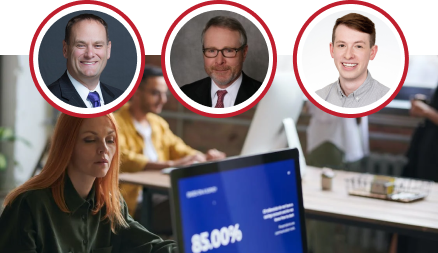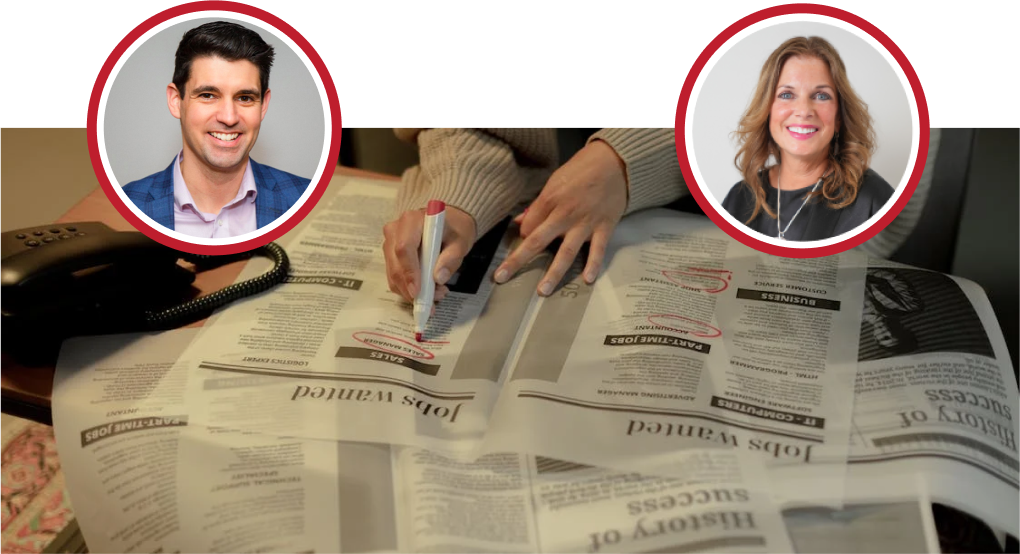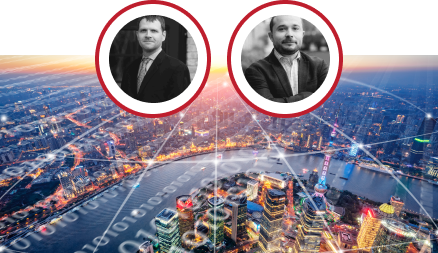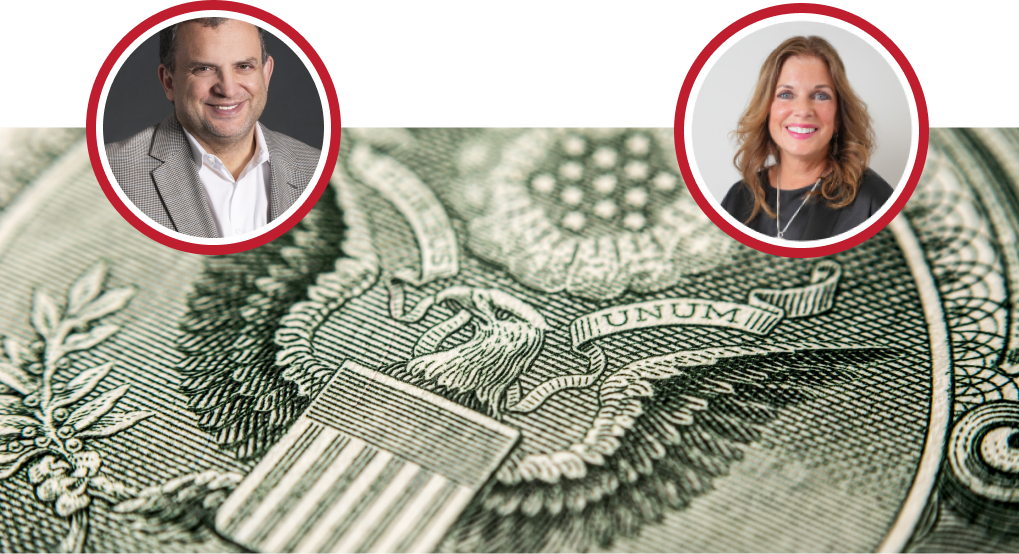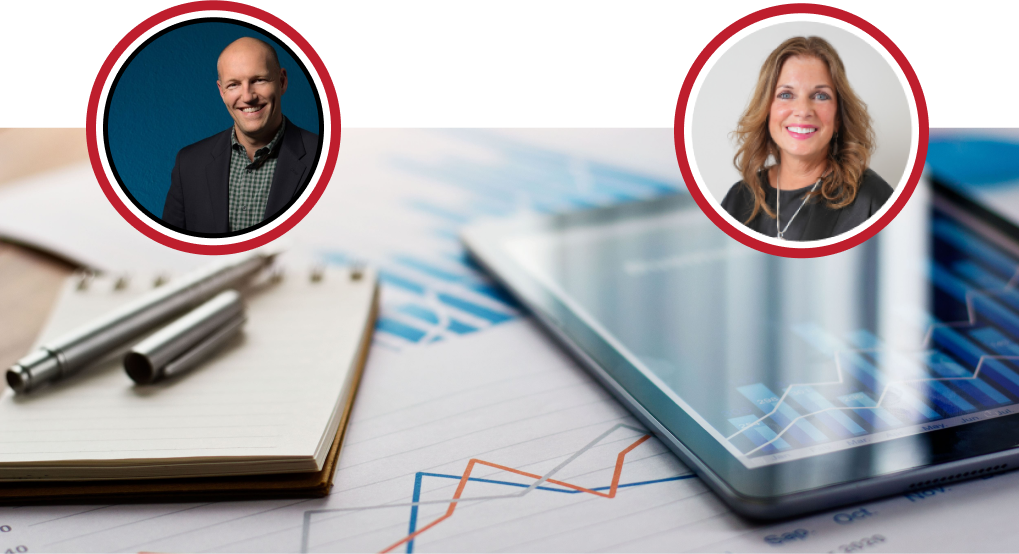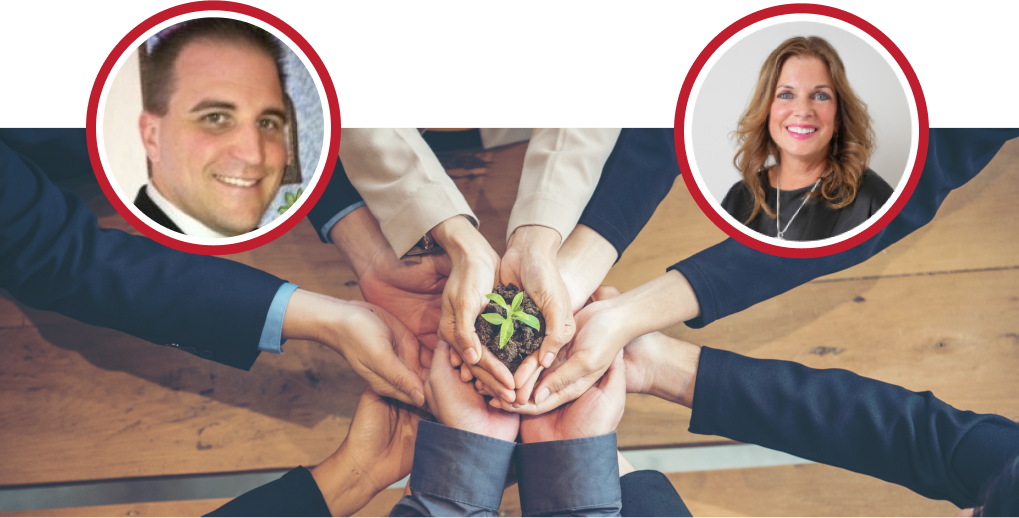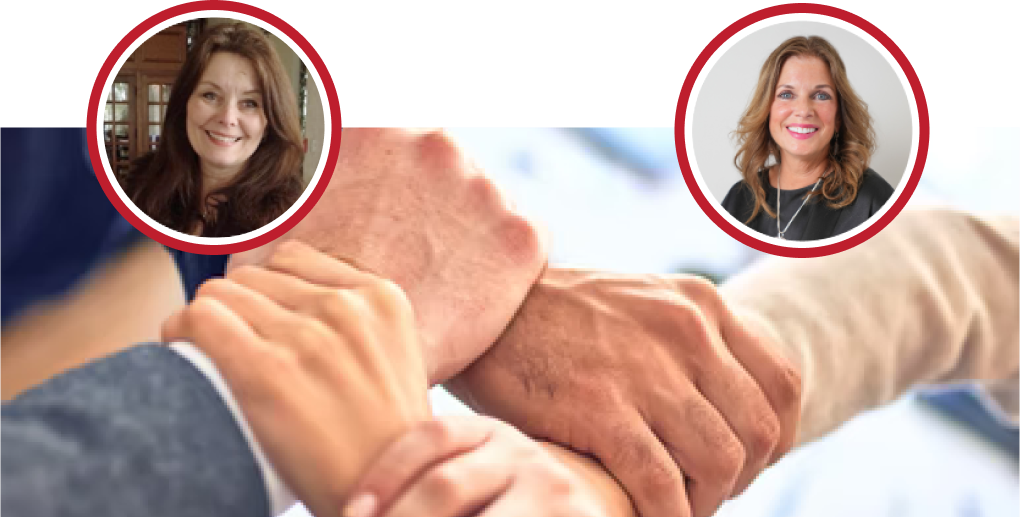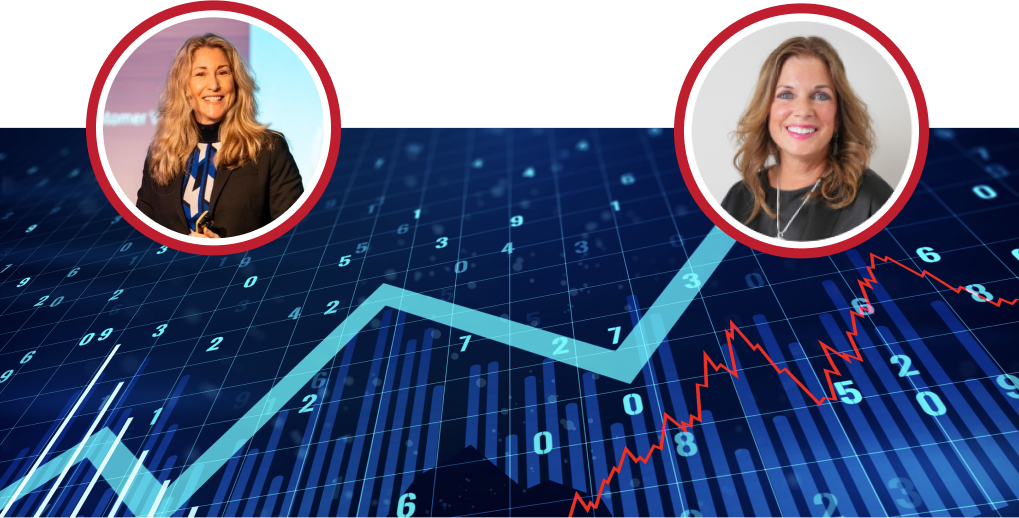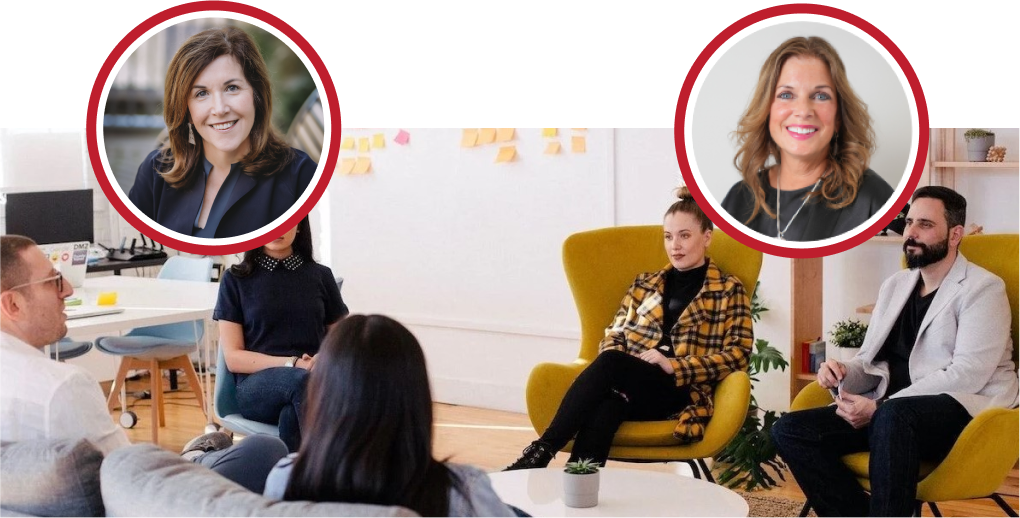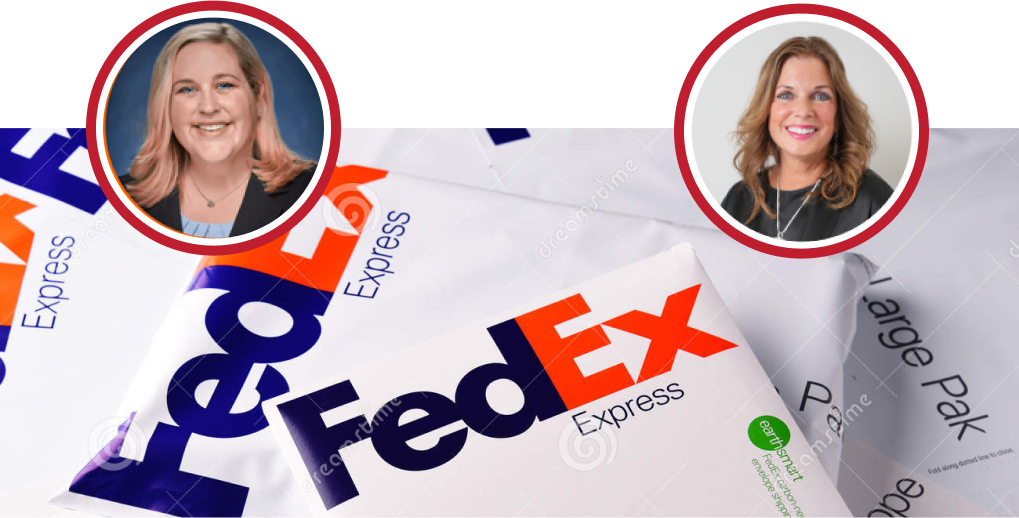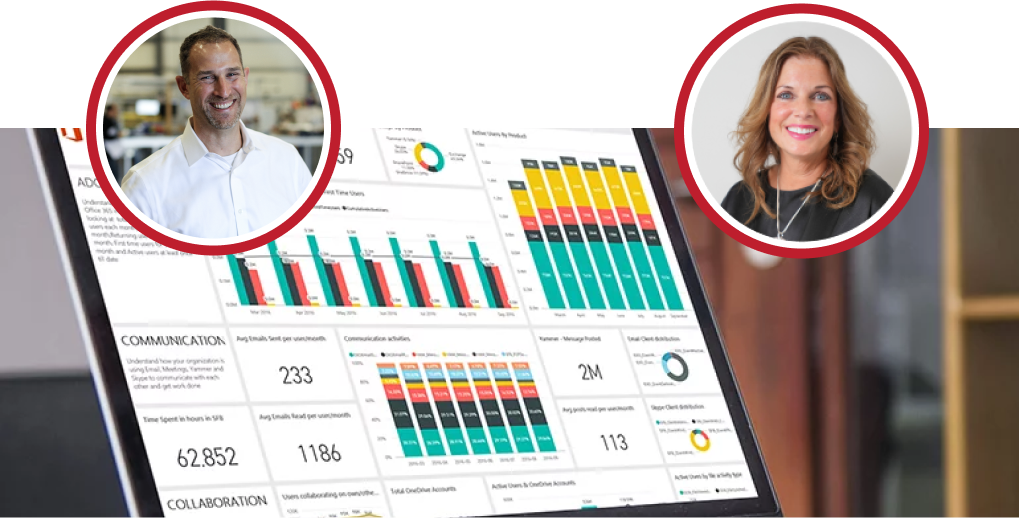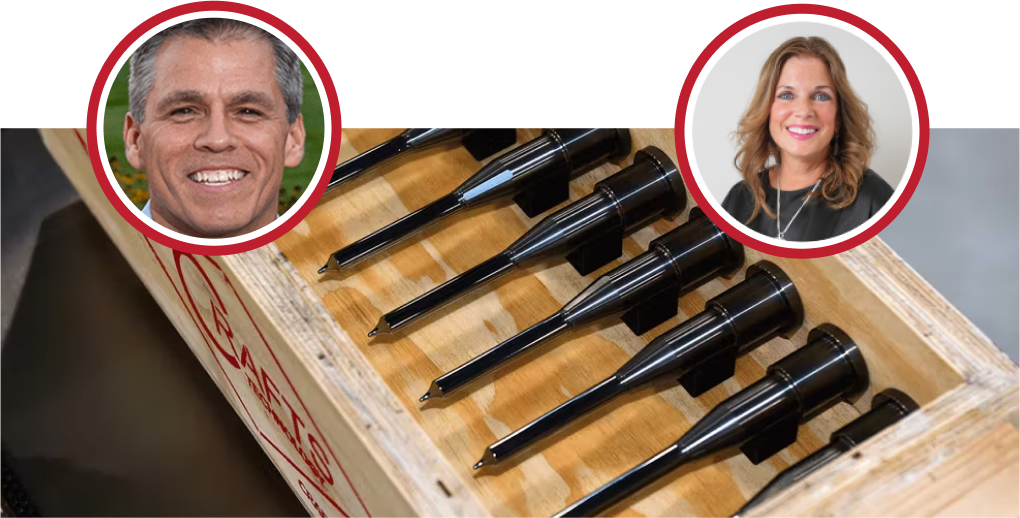Kathy: Welcome to the business as unusual we’re going to get started in just a few minutes if you are attending via our live stream Dana Kramer will be managing the chat so please feel free to add your questions and she will feed them to us today so I’m Kathy Steele and I’m the CEO of Red caffeine and your host today and for those of you unfamiliar with red caffeine we are a growth consultancy and it’s our mission to build badass brands that people want to work with and for and uh so today I’m guessing that you’re probably here to learn how to improve your recruiting and retention strategies if that’s the case you’re not alone if you’re like most leaders running organisations today or you’re leading the H.R. function for your company the volatile economic conditions and mass layoffs in certain sectors are really contrasting what we’re seeing in terms of unemployment rates so it’s very confusing for leaders today so hiring slowdowns returning to the office or not pay transparency and quiet quitting are all things that are impacting us right now and so at Red caffeine we have changed the way organisations think about their growth and with one real really one universal truth that it’s a choice that we’re all making and it’s just really a choice that we’re all trying to improve a little bit each and every day so one of the ways we help our clients is by levelling up their talent strategies with proven best practises and we don’t just make it up as we go along we really are looking to leaders like our guests today um you know to learn the best approaches from industry experts um and so we’re really thrilled to have Maryland theyomi from H.R. source with us again Maryland has been a guest before if you’re a regular attendee uh of the business as unusual series, and she’s co-hosted, and she always brings so much value to the conversation because she’s really got her finger on the pulse of the talent space. She is the president and CEO of H.R. Source, as I mentioned, and they’re a Chicago-based employer association with over 1200 member organizations, so she’s got, you to know, the insights of so many different leaders and so many different market sectors. She’s a highly respected speaker as well as a trainer and advisor, and an accepted authority on workplace issues, including culture, employment trends, and H.R. management. Countless organizations have benefited from her expertise during her distinguished career at H.R. Source. So, we’re just again thrilled to have you, Mary Lynn. It’s always a very thrilling conversation, and so as we were starting to sort of prep for today’s session, we were talking a little bit about how you’re just coming off a conference, so you really do have your finger on the pulse. You know, just a week ago from yesterday, you hosted the H.R. Everything conference. So, you guys were covering topics like making remote and hybrid work and America’s demographic drought, which I’m very interested in hearing a little bit more on skills development and surviving on a wage in our investigation. So those were some of the things that were on your agenda but tell us what some of the hot button topics were that, you know, were focused on at your sessions last week.
Mary: Great, well, first off, Kathy, thank you to you and the Red Caffeine team. We really enjoy partnering with you on events like this and others, and I appreciate all the kind words you had to say about H.R. Source and me personally. It’s been a real treat to have these ongoing discussions with you. I feel like we never have enough of them. We have so much on our agenda because so much is happening in the Talent and workplace space. The pandemic created additional challenges uh and employers are still trying to kind of get their footing again and face the future with optimism in spite of all these head headwinds and right now there’s a storm here in Chicagoland or Bruin so if you hear the thunder and lightning maybe that’s what employers feel a little bit like on a daily basis as challenges continue to arise so at our conference last week which we call our altogether their H.R. conference which covers everything H.R. we had over 300 Illinois employers and we started the day with a keynote presentation which really energised our attendees on the topic of cultivating Talent it started with the premise that instead of employers thinking of employees as just another resource employees we’ve learned think of their relationship with their employer like they do other relationships so they’re looking for a lot more than just a pay check so the fact that we are in a challenging time um recruiting and retaining Talent means we need to take a different approach and spend a lot more time getting to know our employees and nurturing and cultivating our Talent as opposed to thinking of them as completely replaceable resources, because we know that’s pretty challenging. We also had great sessions on employment, laws, and the changing landscape; there’s a lot of case law coming out both at the federal and state levels that are very instructive for employees. The courts are often coming down on the side of employees, which provides some critical lessons and necessitates changes in policies and practices in areas like pay transparency, which we’re going to talk about in employment contracts Severance agreements, all sorts of issues that you know are hard to stay on top of we also did a number of breakout sessions on the hybrid workplace, which I know we’re going to delve into more deeply, but that continues to be a very hot topic as employers try to figure out whether or not they need brick and mortar, what motivates people to get back to the office, and what are some benefits that they can provide that will be valuable to employees in today’s environment. So, there are just lots of hot topics, lots of energy in the crowd, and lots of really compelling and interesting dialogue about the different choice’s employers are making.
Kathy: Yeah, I know. I’m sorry to have missed it. I was not in Chicago, so it sounded like a really great uh array of content; tell you know, I do have to ask this demographic drought: can you just explain that concept a little bit? I am very intrigued by what that session entailed.
Mary: You know, the population is changing, and not all of the trends we’re seeing are just related to the pandemic, right, like Baby Boomers. I’m at the very end of the baby boom and we knew Baby Boomers were going to be retiring so some people are calling this the silver wave we also knew that younger employees were not going to be looking for the traditional long tenured employment opportunities that people did in the past we also have some concerning Trends about workplace participation rates for example if 40 years ago when I was first a young employee about 60 percent of teenagers worked and liked working and liked during a pay check that labour force participation rate is now down to 37 wow so there are all sorts of Trends going on uh add to that the fact that many young males are either in legal trouble choosing to game in their parents basement are not entering the workplace uh at the same rate that they once did you know, many even college-educated young employees decided to leave the workplace for a whole range of reasons and be a digital nomad, move across the country, or be a gig worker, so there are just a lot of different trends impacting the ability of employers to hire in a traditional way, and many of these trends are new and emerging, but others have been on the radar screen for many years but are not necessarily moving in a direction that is good news for employers.
Kathy: Well, that’s, you know, it’s a bit troubling. I mean, we’re already facing so many, you know, unique conditions around, um, you know, performance and our economy, and just the three never seem to be any good news, so it is troubling to hear that we’re, you know, going to have to be combating even more new issues, so I was curious if the Democratic drought was also like was hitting certain sectors because, you know, I do feel like the gig Workforce the um contract workers like we you know, we have both you know full-time employees and do employ some contract workers and I think that you know we’ve really enjoyed that flexibility of Staffing strategy but I have a sense that we’re going to start to get um way more regulation around those type of employment agreements. There’s going to be a lot more scrutiny for employees, uh, employers and employees as well. Is there anything you can tell us about that?
Mary: Yeah, so those are a couple of good topics. First of all, I am an eternal optimist, so I’m going to really try to focus on some of the good news for employers as well; I don’t believe it’s Doom and Gloom. I think it just requires additional creativity, but back to your question about create creative options, independent contractors, more legislation, and more employment law cases employers have tended to always be a little bit risky with regard to their interpretation of the independent contractor guidelines and they are guidelines and so during our conference one of the topics that our chief legal counsel Kelly Hayden focused on in her presentation was the fact that employers need to be aware that they should only be hiring independent contractors for roles that are not the same as roles that they have regular employees employed in they should be so if you and I need a new roof put on our house or our house painted or some remodelling done we don’t tell those people who are hired to do that project what time to get there what kind of materials to bring we measure their performance on the finished product we don’t have a lot of control over the methodologies they use and so employers need to follow those similar practises if you are exercising a lot of command and control over individuals that you are considering to be independent contractors, and those independent contractors are only working for you and not receiving benefits like your regular employees, you could be running afoul of those guidelines, and I think we will be seeing more uh regulatory action in this arena; it’s been an area of interest for many years by the courts uh both at the state and uh Federal level and I think we’re going to see more of it.
Kathy: Yeah, I mean, I would assume it does impact, you know, state income tax, and if we’re, you know, corporations paying both employment tax and employees are paying tax, I think there’s some, you know, opportunity loss for our government in terms of collecting what they probably deem uh you know theirs. So, I do think it’s going to be an interesting landscape as we move forward, so I’m going to switch gears and talk about, you know, the theme that sort of held everyone’s attention. There were lots of articles written on the great resignation; we saw it play out in 2020, 2021, and 2022 um, but in, you know, 2023, we’re hearing this new, you know, headline that’s capturing attention called the Great Regret, so there’s some data that you guys helped um help serve up uh in according to the jobless 2022 U.S. job market report, one in four people that had quit their job regretted the decision, and so I’m curious to see how you’re seeing this play out with some of your association members or even in your work as a board leader um you know at the world of work what is this, you know really is this like a sexy headline or is this really uh a fact that’s playing out.
Mary: No, obviously anything that starts with the great is meant to get the attention of the reader, so you know media has fuelled some of these trends and you know put them in the headlines on a regular basis, but the great regret one of the data points we found showed that a quarter of people who left their jobs uh during the Great resignation are not that happy that they did a pay check study on a similar theme shows that up to 80 percent wow eight zero are not so sure that they made the right decision some of the reasons they underestimated what the new role would entail so they maybe they thought they were leaving for better work-life balance or a lighter workload and they found that not to be true they also missed their co-workers they sometimes miss the culture of the organisation they work for some employees are regretting the fact that they made a change because they wanted to have a hundred percent remote job and they now wish they were at an employer that had at least the option to go to work a couple days a week in an office environment with their colleagues and so I think the phenomena is real you know whether I I think the real number of people that are regretting it is probably somewhere between 25 and 80 percent um and it probably ups and flows you know back to one of your other points about the demographic changes and the skills drought I mean we’re seeing certain industries that got severely whacked during the pandemic uh because of the working conditions and how difficult that pandemic period was in terms of their workload and so Teachers Health Care workers retail workers Hospitality workers: many of them are choosing to leave not just their job but their industry all together and I think there will be some great regret from some individuals who were dedicated to a career or a profession but due to work out a workout sorry due to burnout and working conditions poor working conditions um lack of time to work out maybe um they may regret leaving a profession that was a passion of theirs that they connected with the mission of or the values of so that’s going to still be playing out in the years to come so the great regret is real. It’s going to be a trend that continues, but it’s a really individual question of whether or not you make the right decision from the employer’s perspective. One of the things that we’ve been noting as a concerning trend, and I think it’s a remnant or a way that the great regret is playing out, is we’re hearing from many of our member organizations that new hires are leaving two or three months into a new job, so they’re not waiting a year or two maybe they’re saying I won’t even put this job on my resume. I realize I made a bad decision. This is not a good fit, either. They’re in an industry where they know that opportunities are plentiful, or they know they still have a great relationship with their former employer, and they have a chance of going back.
Kathy: Yeah, no, it’s so interesting because I was just attending, I met the entrepreneurial or operating system or EOS conference right now and that was one of the you know focuses of a session, I just attended about really you know we call it accountability charts in EOS and the accountability chart versus like a job description really gives you a much clearer picture of what you really own in a role and um and so you know building a strong um accountability chart and you know referencing that throughout the review like interview process and um and then even as they get into the first you know 90 days or six months of employment re-evaluating going back to that accountability chart I think is it really reinforces you know you were hired for x and now that you’ve been in the company for a few months are you actually experiencing um things that you were told you would experience in in the role so you know I really interesting um I think they also mentioned that this is you know a younger demographic really does want to know exactly they’re not going to be you know as accepting of coming in and then you know the job is completely different than the expectations that we’re set during the interview process. So, I know we’ve talked about it in, um, some of our client relationships, and we’ve, you know, uh, seen these alum types of structures where you’re actually creating some structure and framework around staying in contact with, past employees. I think they may not return to you as a boomerang employee, but they also may be able to refer other great candidates to you. As you know, you’re starting to hire, so what other things our employers are you seeing employers do to be able to reach back or stay connected to their past Workforce?
Mary: So, keep in mind the old cliche: never burn a bridge. So, employers used to feel like they had been broken up with when an employee chose to leave them. Right, it’s like if it’s hard, you’re dead to me, right? Those days have come and gone. so right I think employers are much more cognizant of the fact that people have all sorts of reasons that they choose to either stay at your organisation or move on and so treating employees with respect and like very open and encouraging even when they’re choosing to leave can really net positive results down the road so some of the more formal things employers are doing are actual alumni clubs much like universities have where they send newsletters maybe they had social media meetup groups they invite people to happy hours or holiday parties those are more formal many times big organisations have these groups especially you know like a big accounting firm or a firm that hires lots of recent College grads who often you know get their early experience at these firms then go on into industry or other jobs but eventually might come back to the big firm when they’ve gotten some other experience on a way less formal basis Staying connected on LinkedIn sharing articles, liking people’s posts, commenting when good things happen to a former employee, asking them out for coffee, asking if they want to jump on a Zoom or a team’s call keeping in touch we HR Source has a number of boomerang employees and almost all of them came back to us through informal networking connections right one employee for current employee has lunch with another uh former employee and finds out they’re not that happy in their current position or they really didn’t like working part-time or they’re they retired too soon and all of those are door openers to hey do we have a role for this person could they come back to us on either a fractional basis or a full-time position could they be a gig employee or help us out with some projects What’s the appetite for re-engaging and we’ve had great success and are big fans of the boomerang, employee phenomenon, but it does require some outreach effort and some energy and resources to take advantage of these opportunities when they arise because you’re not always going to have the perfect open position when these individuals become available, so you might have to be creative with how you bring them back into the organisation.
Kathy: Yeah, I mean, I’ve learned a tremendous amount from just staying in touch with past employees about just even improving the current employee experience because they’ll, you know, I love asking that question about what is that one or two thing that you’re getting from this new you know, this new environment that you weren’t getting at Red Caffeine, and that has sparked some things that I’ve been able to just you know initiate because it’s just that I would never have known if I didn’t get a chance to, you know, have dinner or have a coffee with somebody and ask all types of questions, so great semi great ideas um what uh let’s, you know, talk a little bit more about turning the table because I know this is not the headline Grabber, but you and I were starting to talk about employer regret. You know, the Market softening our economic conditions, this looming recession, you know, inflation, all these things that are really starting to constrict our economy are going to force employers to make some hard decisions, so talk to us a little bit about, you know, what does that look like, you know what do you guys see in that you know and how are you advising your association members to really think about them, you know not I know we’ve all invested so much in recruiting great people. It’s just challenging to have to think about, you know, letting anybody go at this point.
Mary: Exactly, so a couple of leading indicators that we’re starting to see but not at a level where we have big concerns, but obviously the headline Grabbers are all of these big companies, big publicly traded companies that are doing mass layoffs. They’re getting a lot of negative press and ugly P.R., some of it based on the way in which they’re delivering these messages right. Imagine yourself as an employee from one of these companies that’s getting national headlines that on Tuesday, they’re laying off 30 percent of the Workforce. It’s going to ruin your weekend if you read that in the paper on Thursday or hear it right. It’s causing a ripple effect of anxiety and stress concerns that don’t give you warmth and fuzzy about those organizations, so they’re getting a lot of press. Our leading indicators show a slight uptick in the number of requests for assistance with severance agreements, followed by some requests for assistance with reductions in force, so if a member of ours has multiple terminations or layoffs happening on the same day, they often ask for our assistance to make sure that they have all the support on hand required to deliver those messages answer questions help people understand the severance agreement the Cobra health care benefits continuation, so we’re getting a few requests for those. We also have had a slight slowdown in the number of requests we have to assist members with recruiting, not in any of these areas. It’s not a concerning level by any stretch, nowhere close to the last Great Recession and or the pandemic. Still, just here and there, we’re paying attention, obviously, because of the headlines in terms of options for employers. I like to think of it as a continuum; right a mass reduction in force is blunt trauma to the organization and only be considered when all other alternatives have been pursued right. I mean, it is a dangerous proposition. The data shows it takes years to recover from a mass layoff at least three years, and some organizations report they’ve never really recovered right that it was so damaging to their organization from morale, innovation, and ability to recruit, so that’s on one far end of the continuum. I guess declaring bankruptcy, shutting down operations, and closing locations altogether are all over there on that side of the chart in the middle are strategic layoffs, right where you are going either department by department, product line by product line, location by location, and strategically determining where you’re over capacity in terms of your staff and you’re not making your margins, profits aren’t where you need them to be, that’s you know moving this way on the continuum some other options, and some employers would argue they’re doing that all the time, right, we’re constantly monitoring for people failing to meet performance expectations right in any given moment there’s usually at least a few if not a lot of people a number of people I should say a percentage of our Workforce on performance improvement plans right who didn’t do well on their performance review who need to improve in order to meet expectations another option is furloughs right so asking people to either take a voluntary pay cut or to reduce their hours to help save jobs many employers have been quite successful over the years in getting people to raise their hands and say, they we’re looking for a way to reduce some costs one of the things we’re considering is furloughs, and we would like to take voluntary you know options look at our voluntary options first before we pick and choose who that will happen for or do it across the board. The same thing can be said, um, you know whether or not that’s going to work in your organization. All of these are just options; you may also look for people who are open to a voluntary retirement or an early retirement, and many organizations will sweeten those deals by bumping up their severance packages or giving them a soft landing by covering health insurance for a longer period, or allowing people to resign instead of it being a termination or a layoff, so we recommend really exploring all of those options before you go to that extreme measure of layoffs or reductions in force.
Kathy: Are there any other creative options? I was, uh, you know, moving somebody from full-time to contract or hourly work. Is that you know what are the legal repercussions or, um, is there anything that you should be concerned about in those situations?
Mary: Well, you should be concerned in the independent contractor arena if you make someone a project worker and you’re treating them for all other intents and purposes like an employee. Okay, you’re going to be running afoul of the law if you’re going to have someone work on an hourly basis so that you no longer have to pay them benefits again. I’m not saying this isn’t an option, but you’re going to need to work with legal counsel and ensure that your call-in is spayed a spade. You’re complying with all of the real relevant employment laws because, you know, exempt and non-exempt classifications are one area of the law, and the independent contractor guidelines also need to be considered. How much flexibility if you’re hiring someone as a project employee? Are you telling them what days of the week they need to work, still providing them equipment and a workspace but just eliminating their benefits package? That’s probably not appropriate.
Kathy: Excellent, thank you. I know it’s a complex strategy, and I know I’ve been talking to some other employers about these types of things. I do see people leaning into the optionality angle so that they can, you know, really work with their team to make, you know, the best decisions for both the organization as well as the employees, so let’s switch gears again and talk a little bit about you know to return to office or remote, and hybrid options I do feel like we’re seeing a lot more people ask people to return to, you know, work in the office, and then others have you know really embraced remote working or some combination of the two. What do you see in terms of those trends, and how do you know if it’s causing people to leave an organization if they’re being called back to, you know, going to the office on a more full-time basis?
Mary: So again, so many headlines on this topic, so return to office even has its acronym NOW RTO uh, and employers have gotten really an amazing amount of pushback from their employees who have said give us a compelling reason to come back don’t tell us we’re coming back because you have rent to pay or because you have an office here waiting for us or because you want to see us more often we need a compelling reason. We have proven during the pandemic that we are hard-working. You can trust us, our performance has been almost as good or better, we like the fact that we’re not wasting time commuting and that we’re able to balance or align our work and family lives much more effectively, so there’s been the most pushback to these mandates that are not coupled with a compelling reason to come back so that has made many employers reevaluate and say wow we didn’t think that one out very well we didn’t communicate very effectively we need to reevaluate change our messaging perhaps change our policy some of them did that after they saw people leave in droves or they just had people not come in right their policy said three days a week and people showed up one or two and unless you are monitoring card swipes or other ways of monitoring right which some employers are doing uh getting employees to comply has been harder than employers expected so for the most part the hybrid workplace has been embraced employees say that they like the combination they like getting out of their own home and their yoga pants a few days a week and coming back to the office to see their colleagues collaborate have team meetings use the resources available you know big copy machines you know free coffee and water or food you know collaborative nice technology so the popularity of the hybrid workplace is here to stay there’s lots of different variations on a theme I read an article that said on the two extremes, so if you’re looking at the bell curve, only six percent of white collar or office employees like to come in a hundred percent of the time they would prefer being in the office six percent six that’s a low number, and then 28 percent are divided three other ways a hundred percent remote work never comes in three plus days a week or under three days a week, so it’s kind of evenly distributed with a very small subset, so it’s not 25 across the board, because there is a just a small group of employees again let’s be considerate and we learned this early on in the pandemic there are a whole subset very important part of our economy that don’t have a choice right and we’ll always be going to a workplace so I always want to be completely respectful of Hospitality manufacturing Health Care many industries that are not going to have the opportunity to enjoy all of the benefits of a remote or hybrid workplace due to the nature of their work or the industry that they’re in.
Kathy: Yeah, I mean, I’m curious. We have a great question, but I want just to ask one follow-on, you know, what have you heard in terms of compelling reasons that people have, you know, leverage to bring their Workforce back because I’m hard-pressed to think of a lot of compelling reasons unless you know like you mentioned before I mean we’ve got we work a lot in manufacturing and sectors where it just it never was a hybrid or a remote opportunity.
Mary: Right, so a few onboarding trainings, it’s like certain skills are just much more effectively trained in person mentoring collaboration, creativity brainstorming, innovation testing of products and services, delivering educational programs. I mean, I mentioned earlier that over 300 people turned up at our conference last week. These are the same 300 people who were logging in online when we were doing virtual conferences who now say they missed the networking. They missed raising their hand in a session and asking their question live; they enjoyed breaking bread with their H.R. peers and with our team members, so collaboration, creativity, Innovation R.D. onboarding heads-down work, by and large, has been proven to be more effective in a place that’s comfortable, quiet, and away from your colleagues. Right-headed writing, research, etc., can be done very effectively. A lot of customer service can be done very effectively from the comfort of wherever you happen to be working. Still, some of those things that really rely on the human connection and learning from others happen well, and I’m not saying necessarily in a traditional workplace but where you’re gathered with the people that you’re collaborating, learning from, or with.
Kathy: Yeah I just heard today and I wish I remember the source but it was about task oriented roles that really do you know Excel from an at-home or remote workspace versus strategic um or you know collaboration where it is a lot more um you know viable when you’re doing it either in person or you know finding a creative way to make sure that it’s still a very similar experience so um one of the questions that came in is it sounds like a consistent and strategic internal communication is becoming more and more critical so rather than a nice to have I mean I think we even talked about like even the roles that you need within your H.R. department because you really do need like this dedicated people person that can help you with the Learning and Development and culture building aspect and then you need more the compliance person that making sure that you’re staying um you know uh abreast of all the regulatory things that are impacting us so how would you recommend um companies without an internal Communications Department think about you know creating those internal communication strategies and.
Mary: Well, there are lots of organizations, Red Caffeine among them, and many other organizations. I mean, H.R. Source obviously can help from a compliance perspective, but we can also help make recommendations on employee communications. It’s been a wonderful evolution of H.R. professionals figuring out that they need to be connected to the marketing team in their organisation right and that people with strong writing skills exist in all different departments of the organisation; sometimes managers and supervisors are really good at it, and so it might be through some trial and error. Sometimes the top leader of the organisation is a super effective Communicator maybe not in writing but I’ve been seeing increasingly organisations use you know videos where a leader will instead of doing a traditional town hall meeting they will send up you know periodic YouTube videos or Vimeo videos to distribute to their team to communicate new messages you know posting things up on teams or slack or on whatever portal your organisation is using you know traditional mediums like email you know face-to-face meetings but figuring out what the messages you need to send what medium is going to be more most effective and whether or not you have the internal Talent OR skill sets to uh write within yeah within.
Kathy: Your H.R. department. Yeah, I love that you said that because I was just talking about that again, you know, in the last couple of days, it was pitching, um, you know, employee communication strategies for years. H.R. teams were really hungry for those, you know, that support system, but they didn’t have the budgets. Are you seeing people more um apt to fund those types of initiatives now than they were maybe even three or four years ago?
Mary: Yeah, I think they are, and I think many of them are putting it under the umbrella of the employment brand, right, because the employment brand isn’t just communicated to prospects, right to applicants, right? It also needs to resonate and be in sync with your employees. So again, whether or not you have the internal Talent to do that or whether or not you’re seeking outside assistance, If an organization is struggling with recruitment, retention, engagement, and collaboration, communication is often at the core in terms of one of the methodologies that can be most effective at bridging those gaps you know we had to learn during the pandemic how to spread news quickly, right we were all just drinking out of a fire hose and having from an organizational leadership perspective figure out how to deliver these messages to our teams, so in our favour, we learned how to speed up the process and not overthink it. We are also living in an environment where people want us to keep it real. They’re super formal communication as opposed to getting something out that’s quick, authentic, organic, and clear. No speed is of the essence; employees aren’t going to wait around, and if you leave a vacuum of information, they’re going to make stuff up, and it might not be the right stuff, so I love the idea of figuring out if you have the internal resources to do it yourself if you don’t get help. It’s worth it’s worth the dollars that you pay for it if you find the right partner to help you.
Kathy: Yeah, I 100 percent agree. Now, in terms of a couple of other great questions that have come in, has the acceptance of remote workers broadened the talent pool for most companies’ you guys? Do you see the, I mean, I know it’s definitely, um, opened up, you know, the flexibilities for most organizations don’t require you to come to the office, but is that something that you see across all ums of these larger member organizations that you’re a part of.
Mary: Yes, it has opened up the talent pool. If you’re not having a five-day commute to the office this right, someone might in the past have given pause if it was going to be a 45-minute I think the average commute in the Chicagoland area pre-pandemic was 45 minutes a day each way. I know it was over 30. You know that might have had a chilling effect on some people who didn’t want to make that commute if you’re only asking people to come in a few days a week that could again be an opportunity to open up the talent pool if you’re not requiring people to come in at all um you know it could broaden it even more just a couple of concerns in this area you know, it is a conscientious business decision to decide to recruit from anywhere because there are state laws in this country and you can’t just start employing people in other states without setting up a business presence there and paying the applicable taxes unemployment tax state taxes and so many employers during the pandemic played dumb or their employees weren’t completely upfront with them and they ended up running afoul of the law by not being in compliance they pretended or maybe they really thought their employees were just on vacation in California or Arkansas or Arizona but they were really living there and so employers need to if they start posting jobs on a national or Global basis they need to first understand the business implications and the resources it’s going to take to have employees in States under other than the states in which they’re currently operating.
Kathy: Yeah, it’s, I mean, we ran into an issue with being able to insure somebody um that we were hiring it was like out of I never you know we’ve never had in all the years I’ve run a business I’ve never had this happen before so it was really an interesting Dynamic we found a way to work through it but it’s it was something that we just never had been faced with now in terms of you know sort of emphasising I remember doing this uh so I’m glad this I love this question I are people leveraging you know the value add back that expenses that of commuting um are you know are if you are working remote you don’t have the typical commuting expenses are they leveraging that and how they’re talking about you know that as a perk to employees because I really I remember doing the math for somebody I really wanted to hire this one developer and I’m like hey you know you take that hour-long train wide and you know it’s x amount of days and how much time back that you know that could really you know be uh viewed as compensation back so I’m curious if other employers are using that as you know something that kind of tells somebody how much they would be saving by working for a more remote business.
Mary: So that’s a great question, Kathy, and it’s such a Sticky Wicket. It’s a little bit of quicksand because employers, you know, behind closed doors, leaders are talking about it all day long, saying people don’t have to buy business clothes anymore. They save all this money on gas. They’re not spending money on daycare or after-school programs the way they used to. They get to eat their lunch at home, uh they don’t go to Starbucks all the time on their way to work. They’re saving loads of money. Keep in mind that this move to hybrid work happened at the same time inflation started running rampant, and the pressure on wages and compensation was heavy, so from an employer perspective, I love the idea of thinking about all these positives. If you ask most employees, they’re going to downplay that because they’re going to point to the competitive Market and the wages. They’re also going to say, you know, it’s not a competitive advantage anymore, like everybody’s allowing hybrid or remote work, so it doesn’t mean that my pay should be impacted in any way because it’s the norm, right? It reminds me of years ago, one of the services we provided, and some employers still do these. I used to be called like a benefits value statement, or the hidden pay check, and it was, you know, a document that employees received on an annual basis, and some human resource information systems still have this as an option, but it was on a way a way to capture how much all of these your real benefits that everyone values and knows about Healthcare 401K paid time off vacation time holidays, but then it also allowed a dollar amount to be assigned for things like free coffee, free lunch, free parking, logo wear you know uh free Wi-Fi cell phone, whatever else, employees universally kind of downplayed those statements they you know, they weren’t like universally embraced and loved it was kind of like you know I really care about my pay check and my real benefits all that other stuff is just icing on the cake and it it bothers me but it’s a the way the world is right now I don’t think while employees intellectually understand all of these extra benefits they’re receiving employers pointing it out on a regular basis isn’t a big warm and fuzzy.
Kathy: Okay, so it’s not it’s not something that should be highlighted in your recruitment strategy. All right, well, I know we’re running low on time, but I definitely want to just at least touch on the transparent salary movement. So, can you tell us about, um, some of the things that have happened around pay disclosure laws that were really enacted in the U.S. in the last year, and um, what are some of our legal obligations as employers to the and some of the benefits of sailing sharing salary information in the hiring process as part of a retention strategy?
Mary: So pay transparency is evolving and is making its way across the nation and will continue to, so back to the conversation we just had about employers allowing some employers allowing work from everywhere if you happen to be either operating a business or have employees in one of the states that require paid disclosure in a job posting you’re going to need to consider that whenever you’re posting jobs so it’s required employers to be more aware of what’s happening in other states depending on whether or not their Staffing strategy is occurring or applies to other states so it’s not going away anytime soon it is being driven by a whole host of factors one of which is obviously diversity equity and inclusion efforts some years ago in Illinois um we had a law passed, which again, we were kind not the earliest state, you know, California Massachusetts: Certain states tend to be early adopters, usually blue states, but that’s not always the case. Where we were no longer to ask allowed to ask job applicants about their salary history and those laws were passed because women and minorities have tended to be paid significantly less than their similarly situated male peers so those were some of the first laws that I would put under the umbrella of pay transparency some of the more Progressive laws in this area include things like posting the salary range you know right away when a job post goes up and some employers are just adopting that as a leading practise whether or not it’s being required by law so I know I’m painting with a little bit of a broad brush because we don’t have all of the employers on this uh great session today who are just a hiring Illinois employees right so you’re going to have to be more aware than ever of these laws if you’re a member of H.R. Source or read our Publications we’re writing articles on these topics regularly paid transparency as a concept is it’s time has come even though it’s hard for employers to get used to right because you know I remember when that first law was passed about not asking for salary history our phones were ringing off the hook with employers saying how are we supposed to know what to offer someone right because we used to key the offer on their current rate and it was like no now you need to evaluate the job you need to have a compensation philosophy do you match the Market lead the Market lag the Market you know what are your job related reasons that someone would be in the middle of their range above the range right these are things you need to decide before you go to the labour market and start recruiting for Talent not be an afterthought once you’ve determined who it is you’re going to make an offer to.
Kathy: Yeah and I mean I think we all I mean we’ve been doing it for years now the first time I had an employee say that they felt they were underpaid I’m like based on what and so you know I really as a leader of an organisation you really do have to have your pulse on the pay bans within different roles for your organisation and be able to point to the sources that you’re you know using to Garner those pay bans and I know you guys do salary data um research and Reporting too so you know there’s a lot of resources out there to inform us it’s not perfect I mean there’s you know so many different discrepancies but at least we’ve got at least a starting point um to you know to validate the way the way we want to pay somebody in our compensation policies should our philosophy should really follow that so I cannot believe we’ve got four minutes left so I want to make sure everyone knows how to um connect with you if they’ve got uh additional questions or want to you know learn more about some of the services and offering that you provide at H.R. source so please feel free to reach out to Mary Lynn directly through her LinkedIn account or her email address and put business as unusual in the subject line or somewhere in the message so she knows it came from our session today I want to thank you so much for again just you know blowing my mind with all the great information you shared. I really want to thank our attendees today because they asked some great questions. I thought, you know, we’ve really added a lot of context to this discussion, so thank you for all of you that attended today’s session, and I also want to just give a nod to our sponsors, um three H.R. sources of course, and Insperity are three of our sponsors, and I want to tell you a little bit about our next guests that we have coming up in May, so what um we’ve got coming up with you is it really just how to unlock sales and marketing growth with using buyer personas and I would also say that you know we use employer employee personas too in our work when we’re looking at recruiting strategies and so you know we talk about buyer personnel’s you know did you ever really want to give your prospects a little truth serum so what would you ask them what would they say how would these insights change the way you position your products and services so we’re going to be um having Jim Krause from the buyer Persona Institute join us on May 18th as we talk about this next topic of buyer personas and some of the session takeaways you can expect is how buyer personas make high-tech compacts purchasing decisions so really understanding what factors are they’re thinking about when they’re thinking about working with you how much research they’re doing in advance of even having a first conversation with you and that goes as well for employees I think you know looking at employer personas in the very same way how to get the information you need to Market and sell to the buyers effectively and then what information should really be part of your buyer’s Persona so and then what really doesn’t really matter and factor into this decision so Jim is the president of the buyer Persona Institute and a leading Authority on by our personas and buying insights so I hope you’ll come back and join us for our session in May but again thank you Mary Lynn this was you know a fabulous session as always and really appreciate all of our guests today for attending.
Mary: Thanks, Kathy. It’s always great to work with red caffeine, and it’s so fun to talk to you about these topics that are so near and dear to our hearts.
Kathy: Yes, absolutely well. Thank you, everyone.






